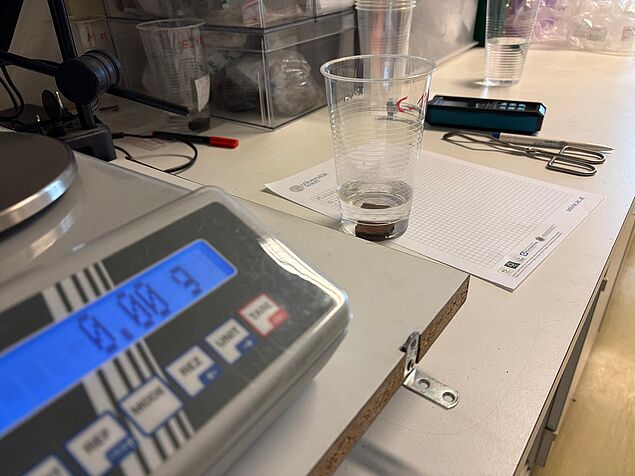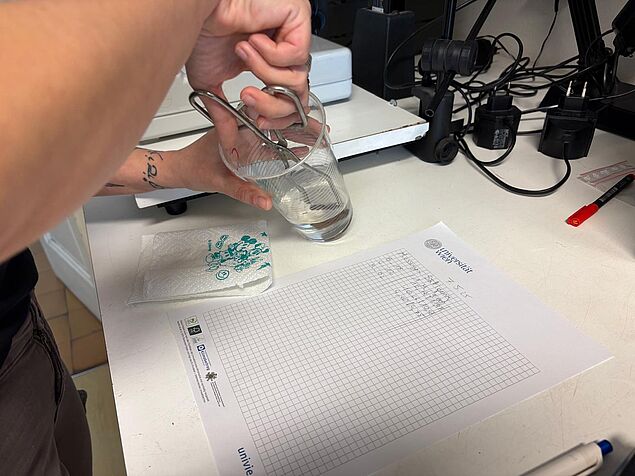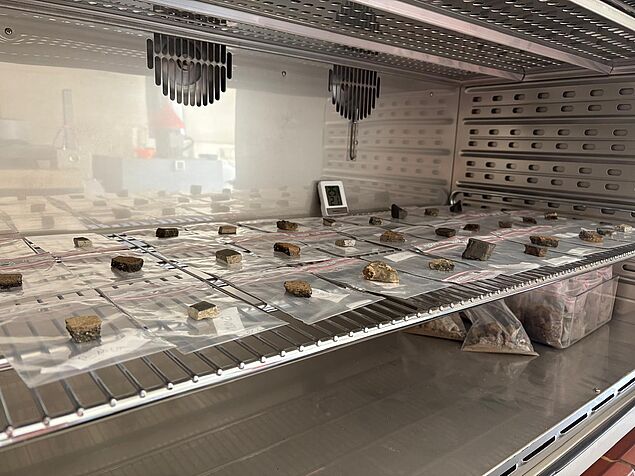Moisture matters: evaluating the effect of pottery moisture on p-XRF analysis
Experiment conducted in April/Mai 2025 by Tabea Truntschnig
In time-sensitive research contexts, particularly during fieldwork, p-XRF analysis is often conducted shortly after excavation or rinsing of archaeological pottery. This raises a practical but critical question: how dry does pottery need to be so p-XRF measurements are accurate and precise?
To investigate this, an experiment was carried out using a chemically diverse set of pottery samples from the project’s reference collection. The selected fragments represented a range of physical properties, including varying thicknesses, densities, tempers, and grain sizes.
Each sample was first weighed in its dry state and then submerged in distilled water. Once the fragments had reached saturation, indicated by stable weight, they were subjected to p-XRF measurements. Afterward, the samples were placed in a drying oven, and additional measurements were taken at hourly intervals until the original dry weight was reached.
This procedure allowes for the assessment of how moisture content influences p-XRF readings during the drying process. The goal is to determine the threshold at which residual moisture begins to affect analytical reliability and to provide guidance on the minimum dryness needed before p-XRF can be confidently applied.
While the experimental phase has been completed, data evaluation is currently underway.



